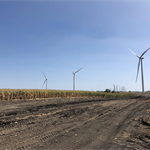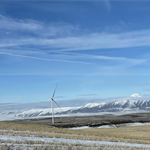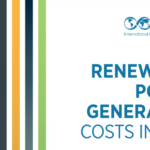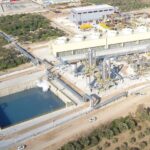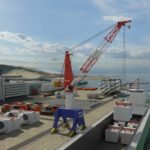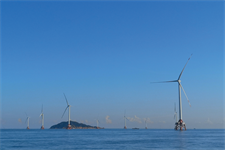IRA effect: US-made components cheaper than imports, LCOE to fall and wages to rise
Energy Disrupter

This is because the Inflation Reduction Act (IRA) makes a “game-changing business case” for wind, as well as for solar, said the report, commissioned by the BlueGreen Alliance and by researchers at the prestigious Princeton and Dartmouth Universities.
The lower cost of components will boost the roll out of wind power and other clean-energy technology projects. And the demand for new kit will outstrip the current capacity for US wind and solar component manufacturing, prompting investment to expand US supply chains, said the researchers.
LCOE to fall
The levelised cost of wind energy (LCoE) – the cost of producing wind power – will drop for onshore projects by more than 60%, compared to a project where the owner or developer decides not to offer workers “fair pay”, as the IRA requires, said the researchers.
Costs will likewise be roughly 20% cheaper for offshore wind projects that meet these labour standards than for projects that do not, said the working paper. published on Zenodo.
Tax credits
The IRA requires wind and other clean-energy projects to offer prevailing wages to get a full Production Tax Credit (PTC) or Investment Tax Credit (ITC).
The legislation also offers the 45X Advanced Manufacturing Production Tax Credit for making or using major components that are US-made rather than imported, including blades, towers and nacelles.
The manufacturing tax credit adds 10% to the PTC or ITC that can be garnered by a wind project owner if US-made components are used.
But the researchers cautioned that the degree to which lower domestic production costs are passed through to prices for wind or solar components or installed projects is “uncertain and depends on competitive market dynamics not assessed in this study”.
For the past two years, the LCoE for unsubsidised US onshore wind had jumped nearly 40% amid inflation and supply chain constraints, Lazard said in an annual report published earlier this year.
The PTC and ITC had been phased out prior to the IRA being signed into law last August.
This higher LCoE comes as struggling western wind turbine manufacturers have been raising turbine prices in the last several quarters to cope with cost inflation – from steel, copper, labour and transport – exacerbated by supply chain bottlenecks.
Jobs boost and wage-increases
The researchers also estimate that the IRA could induce demand for around 250,000 additional wind related jobs in 2035. This includes domestic demand for an additional 55,000 jobs in wind manufacturing by 2035.
With the IRA, the wind sector could create overall demand for total wind employment of 520,000 jobs, with 450,000 in construction and operations and 70,000 in manufacturing. That compares with roughly 200,000 wind related jobs in the US today, said the researchers.
Due to expanded employment alone, the IRA could increase total wages earned by wind workers in 2035 by about $15 billion, compared to the wages earned without passage of the law. This calculation does not include wage increases because of competition for scarce labour.
Any increase in wages to meet the ‘prevailing wage’ standard of the IRA would be more than offset by the increase in tax credit for the project owner, said the academics. Prior research by two of the same authors found that a 20% increase in installation and construction labour costs would increase the installed cost of wind projects by only 1%.
Demand for raw materials
Under the IRA, the demand for cement and steel for construction of wind projects is projected to increase by an “order of magnitude” between 2023 and 2035, although there is high uncertainty regarding the material intensity of renewable projects towards 2035, said the researchers.
By 2035, mid-range estimates of steel demand induced by the growth of wind under the IRA amounts to 37% of 2022 US consumption. For steel, to a lesser degree than for aluminium, a significant expansion of total supply is required to meet demand, some of which will be US-made.





